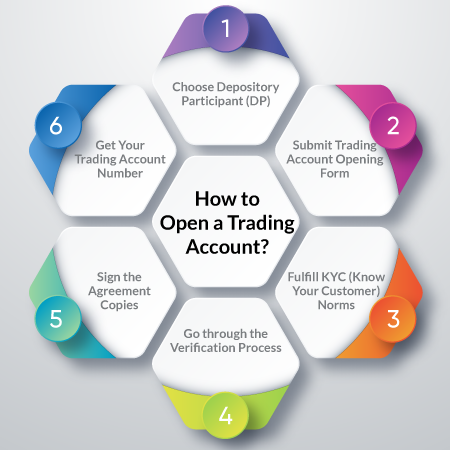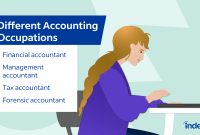In the world of finance, a trading account is an essential tool for anyone looking to buy and sell securities. Whether you’re a seasoned investor or a beginner, understanding the ins and outs of trading accounts can help you make informed decisions and maximize your profits. In this article, we’ll explore the definition of a trading account in accounting, how to open one, and the role of margin in trading.
What is a Trading Account?
A trading account is a financial account that allows investors to buy and sell securities, such as stocks, bonds, and other financial instruments. It serves as an intermediary between the investor and the financial markets, enabling the execution of trades. In accounting terms, a trading account is used to record all the transactions related to the buying and selling of goods or services. It is a crucial component of a company’s financial statements, providing insights into the profitability of trading activities.
Key Features of a Trading Account
- Execution of Trades: A trading account facilitates the buying and selling of securities, allowing investors to execute trades quickly and efficiently.
- Financial Reporting: In accounting, a trading account helps track the income and expenses related to trading activities, providing a clear picture of a company’s financial performance.
- Access to Markets: Trading accounts offer access to various financial markets, including stock exchanges, commodities, and forex markets.
How to Open a Trading Account
Opening a trading account is a straightforward process, but it requires careful consideration to ensure you choose the right account for your needs. Here’s a step-by-step guide to opening a trading account:
Step 1: Choose a Brokerage Firm
The first step in opening a trading account is selecting a brokerage firm. Brokerage firms act as intermediaries between investors and the financial markets, providing the platform and tools necessary for trading. When choosing a brokerage, consider factors such as commission fees, account types, trading platforms, and customer service.
Step 2: Complete the Application
Once you’ve chosen a brokerage firm, you’ll need to complete an application to open your trading account. This application typically requires personal information, such as your name, address, Social Security number, and employment details. You’ll also need to provide information about your financial situation and investment goals.
Step 3: Fund Your Account
After your application is approved, the next step is to fund your trading account. Most brokerage firms offer multiple funding options, including bank transfers, wire transfers, and checks. Ensure you deposit enough funds to meet the minimum balance requirements of your chosen brokerage.
Step 4: Start Trading
Once your account is funded, you can start trading. Use the brokerage’s trading platform to research securities, place trades, and monitor your investments. It’s essential to stay informed about market trends and news to make informed trading decisions.
Understanding Margin in Trading
Margin is a key concept in trading that allows investors to borrow money from their broker to buy securities. This borrowed money, known as margin, can amplify both gains and losses, making it a powerful but risky tool. Here’s what you need to know about margin in trading:
How Margin Works
When you open a margin account with your brokerage firm, you’re allowed to borrow a percentage of the total purchase price of a security. The portion you borrow is called the margin, and the amount you pay is the equity. For example, if you’re buying $10,000 worth of stock and your broker offers a 50% margin, you’d pay $5,000, and the broker would lend you the remaining $5,000.
Benefits of Margin Trading
- Increased Buying Power: Margin allows investors to purchase more securities than they could with just their funds, potentially increasing their returns.
- Leverage: By using margin, investors can leverage their investments, making it possible to achieve higher profits with a smaller initial investment.
Risks of Margin Trading
- Increased Losses: While margin can amplify gains, it can also amplify losses, leading to significant financial risk if trades don’t go as planned.
- Margin Calls: If the value of your securities falls below a certain level, your broker may issue a margin call, requiring you to deposit more funds to maintain your position.
Trading Taxes: What You Need to Know
Trading activities can have significant tax implications, and understanding the tax rules related to trading is crucial for managing your finances effectively.
Short-term vs. Long-term Gains
The tax rate on trading profits depends on whether they are classified as short-term or long-term gains. Short-term gains, from securities held for less than a year, are taxed at ordinary income tax rates, while long-term gains, from securities held for more than a year, benefit from lower tax rates.
Reporting Trading Income
Traders must report their trading income and losses on their tax returns. This includes all profits and losses from buying and selling securities, as well as any dividends or interest earned. Accurate record-keeping is essential for ensuring compliance with tax regulations.
Deducting Trading Expenses
Traders may be able to deduct certain expenses related to their trading activities, such as brokerage fees, software costs, and home office expenses. However, these deductions are subject to specific rules and limitations.
Conclusion
Understanding trading accounts and their role in the financial world is vital for anyone looking to engage in trading activities. By opening a trading account, leveraging margin wisely, and staying informed about trading taxes, investors can navigate the financial markets more effectively and make informed decisions. Remember, while trading can be profitable, it also comes with risks, and it’s crucial to approach it with knowledge and caution.



